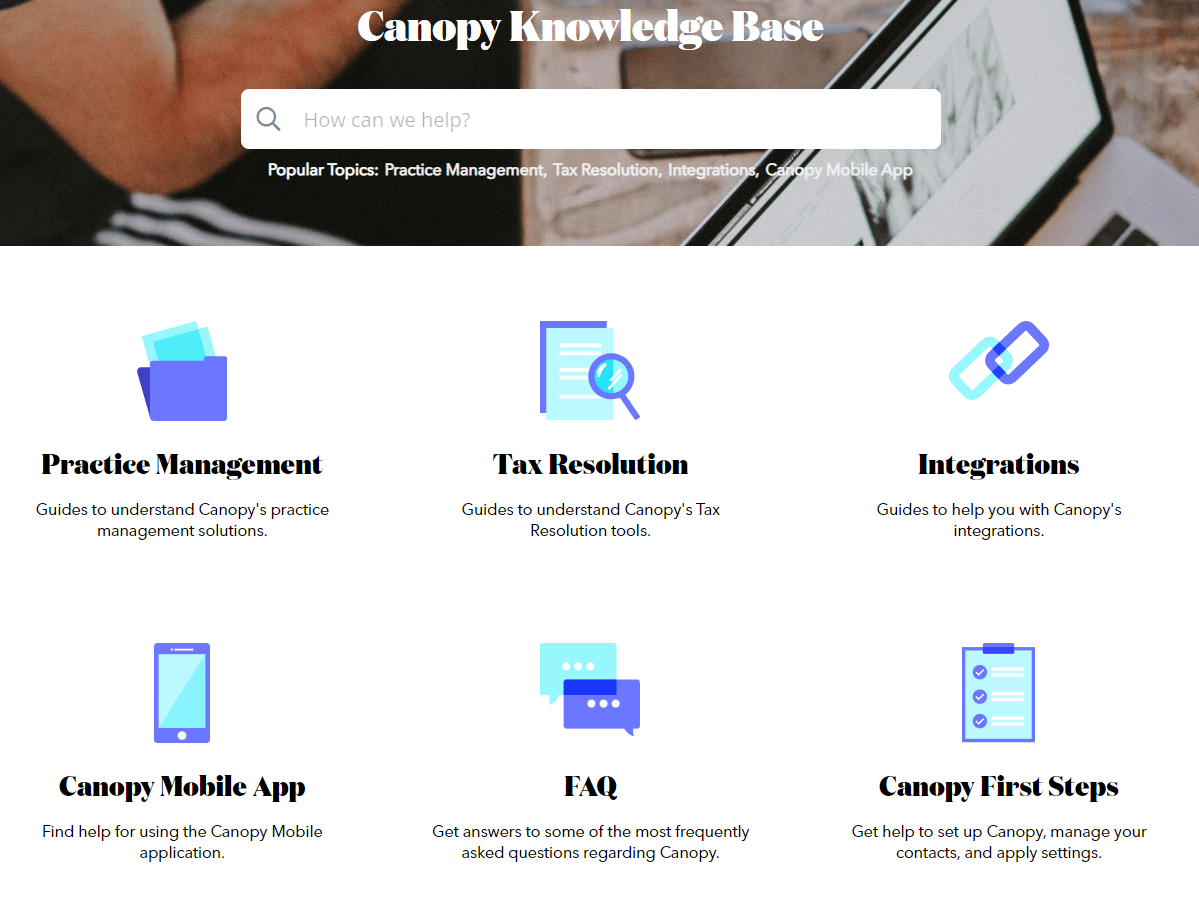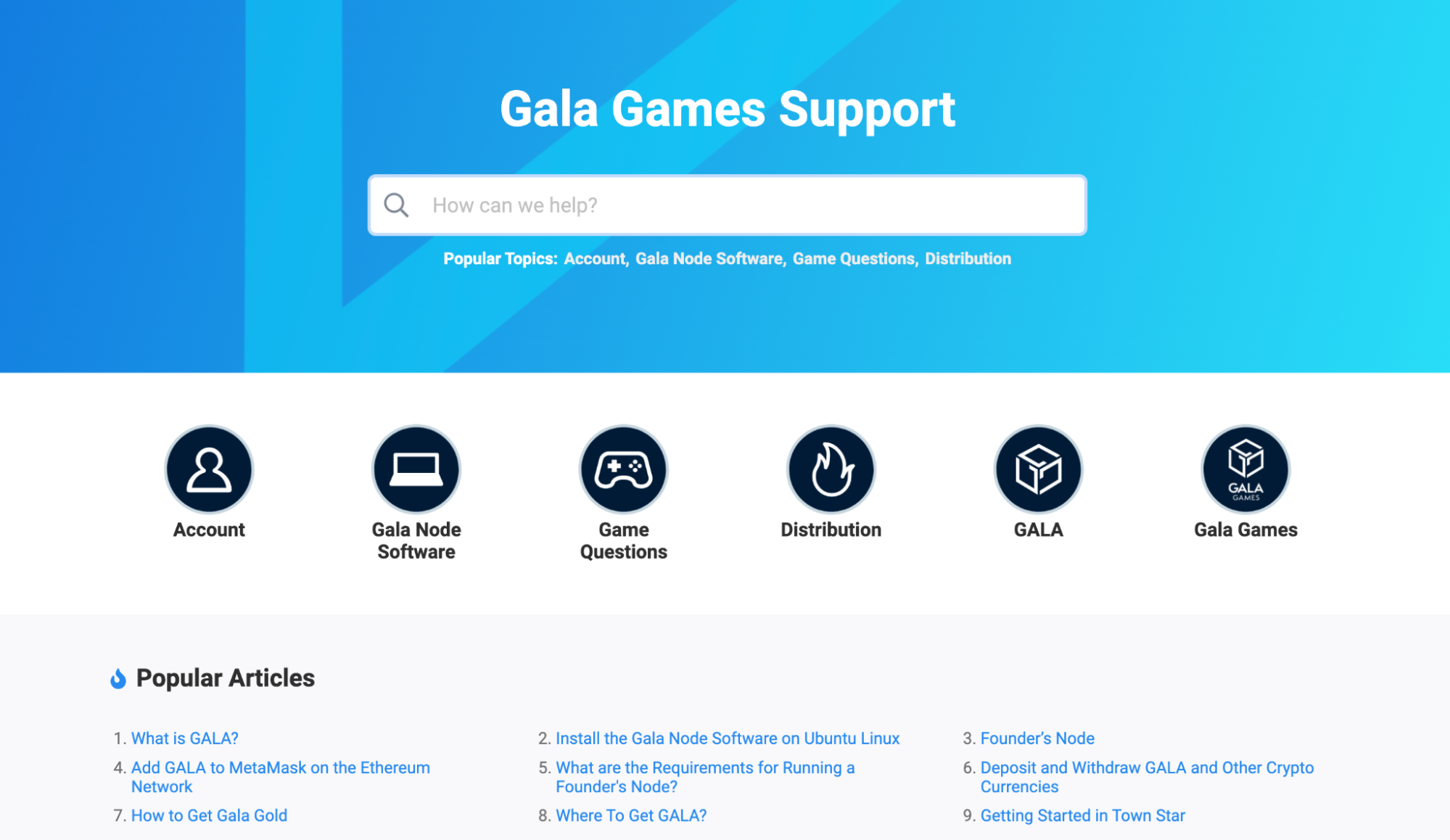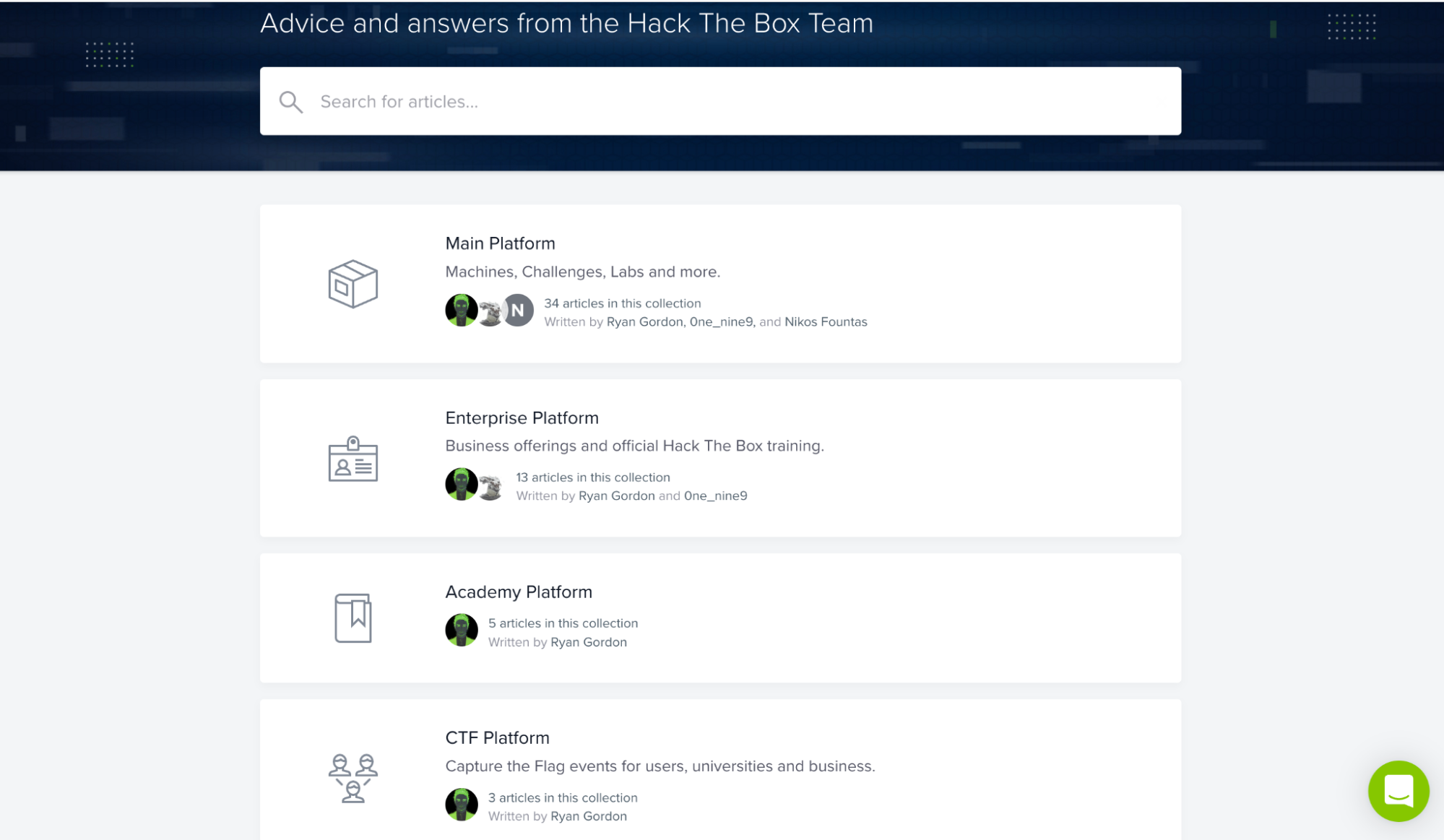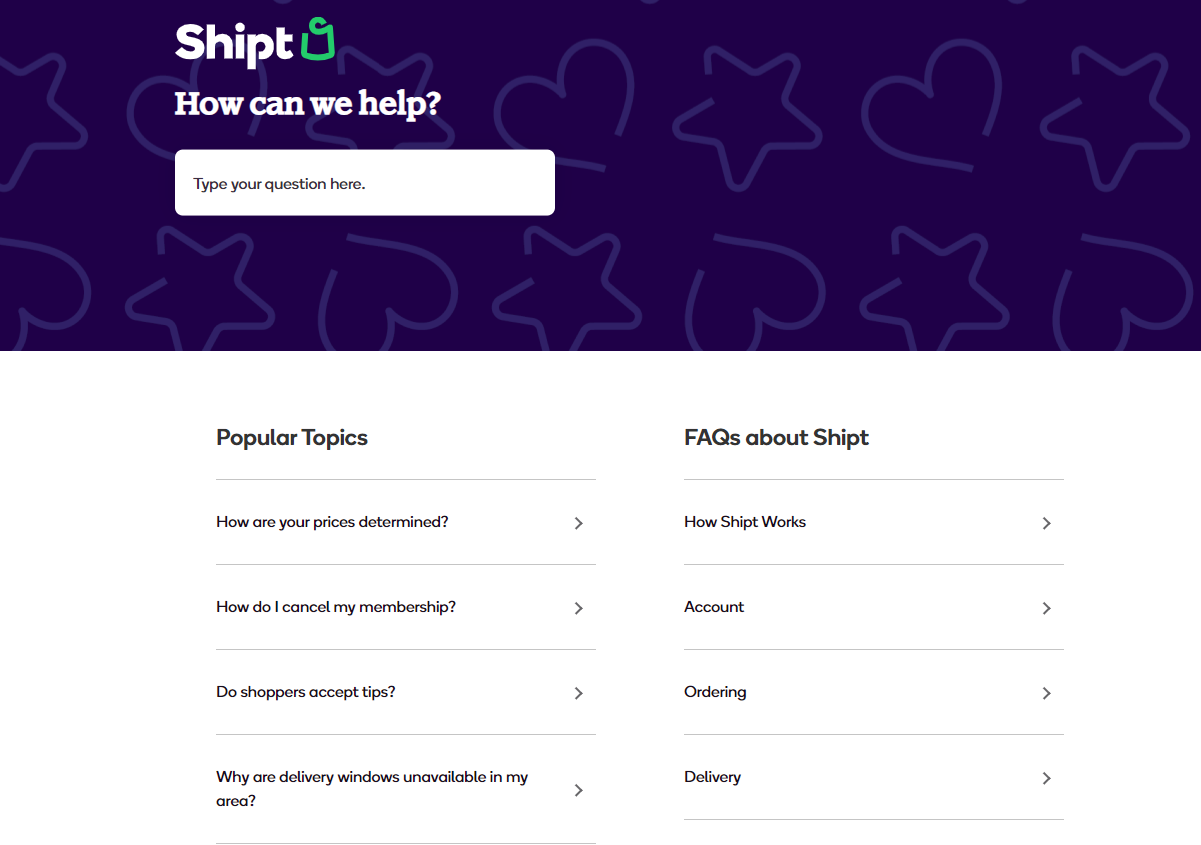Imagine you're trying to assemble a piece of furniture, and you hit a snag. Would you rather search an online guide for the solution or wait on hold to speak with a representative? For most, the instant gratification of finding an answer on their own is the preferred route.
Today’s customers predominantly have the same preference:
Swift answers to their questions without the wait.
To cater to this online behavior, companies are increasingly investing in customer self-service tools. At the forefront of these tools is the self-service knowledge base, an online library where customers can swiftly find solutions to their concerns without the intervention of a service agent.
Highlighting this trend, a 2017 study by Harvard Business Review discovered that 81% of customers attempt to troubleshoot issues themselves before seeking help. Additionally, a whopping 77% of consumers report using a self-service portal.
In this post, we'll discuss the intricacies of a self-service knowledge base as well as its prime benefits, and provide a roadmap of best practices for creating a knowledge base that not only serves but also delights your customers.
Ready to dive deep? Let's go!
What Is a Self-Service Knowledge Base?
A self-service knowledge base acts as a digital library containing exhaustive content about a product, service, or topic. Often integrated into a company's website, it serves as a hub where customers turn to when they have questions or need guidance.

Customers can access this knowledge base every time they need to find an answer to a product-related question, step-by-step directions for using/troubleshooting a product, or learn more about a company's offerings. Imagine a digital library, structured for easy navigation, allowing users to find answers to product-related questions, detailed how-tos, or deep dives into a company's offerings. To aid this search, most knowledge bases come equipped with a search tool, streamlining the hunt for relevant information.
Why You Should Consider Developing a Self-Service Knowledge Base for Your Business
When done well, self-service knowledge bases can:
- Improve customer satisfaction: Instead of asking customer agents to deal with every ticket, customers are empowered to find their own solutions whenever possible. And self-sufficient customers are happier customers—especially Millennials and Gen Z who have short attention spans and need to find answers quickly.
- Lower call center operating costs: It's significantly cheaper to have customers solve their own problems instead of hiring a service agent to solve them. A do-it-yourself interaction costs a few cents, while the average cost of a live service interaction is $7 for B2C companies and $13 for B2B companies. This means that every time a customer turns to a self-service help desk instead of going to an agent, you're dramatically reducing your company costs.
- Ability to provide 24/7 support. Typically the idea of providing after-hours customer support is associated with the need to hire additional customer service members. However, by implementing a self-service knowledge base, you allow customers to find the solution to their problem, even if it's after business hours.
- Lead to more productive customer support agents: When a customer contacts support with a problem, support agents can simply send a link to an article instead of writing it out themselves every time. What's more, as customers will be resolving issues themselves, customer support will have fewer low-complexity issues to fix. A lower volume of tickets will be coming into their inbox, and they can shift their energy into more higher-impact activities.
7 Best Practices for Creating an Effective Self-Service Knowledge Base
Many steps go into creating a self-service knowledge base. From gathering commonly asked questions and writing the content to collecting feedback, the whole process can seem overwhelming and confusing.
We're here to help!
Follow these best practices to create and manage an informative and engaging knowledge base, regardless of whether you're a SaaS or an eCommerce business.
See What Repeated Problems Your Customers Are Facing
A self-service knowledge base should provide answers to the most common problems your customers have.
Anyone in your company who interacts with customers will be able to come up with the most commonly asked questions. That’s where you should start!
For example, you can sit down with the support team to see what customer questions they keep answering again and again. They will be able to put together a list of questions from support tickets and chatbots they spend most of their time on and see come up most often. For instance, if you're a SaaS company, customers may be asking questions related to onboarding, or if you're an eCommerce business, customers may be confused about your returns policy.
The support team is not the only one in your company who can help you create a comprehensive and accurate knowledge base. Other teams like the marketing, sales, and customer success teams can also be useful in coming up with customer queries, challenges, etc.
With this in mind, consider organizing meetings with different teams from your company to discuss the most frequently asked questions they come across and ask for their opinion. You can even invite your software development team that built your product to tell you if some particular functions need to be explained more thoroughly.
The truth is that data is your best friend. Apart from looking in tickets and chatbots, you can also dive into your CRM data or other systems to analyze customer interactions. Pay attention to the most basic issues as these are the perfect information that should go into your knowledge base.

Think About the Structure of Your Knowledge Base
Newsflash:
Structure can make or break your knowledge base.
Just like a dictionary that won't serve its purpose unless it's structured alphabetically, a disorganized knowledge base will only confuse your customers rather than lead them to a solution.
Before we dive into some tips, it's critical to mention that there isn't a single right way to structure your knowledge base. There are multiple ways, each with its own set of advantages. The best structure for you will depend on several factors like the type of your business, the size of your company, your specific product/service, etc.
Let's take Hack the Box knowledge base as an example.
Hack the Box offers several products for cybersecurity training. That's why they have a centralized knowledge base that leads to multiple product-specific knowledge bases. It takes readers down a structured path that makes finding answers to questions easy and less overwhelming. This is a good approach if you have multiple products or services.

When it comes to eCommerce businesses, structuring your knowledge base by theme is a good strategy (e.g., "Delivery" and "Order Issues").

So, although there's no one right way to structure the knowledge base, there are some best practices you should follow to avoid confusing your customers. For instance, before you begin writing the content, consider developing a flow chart to create the basic structure of your knowledge base. Then, you can add broader categories, followed by subcategories, and possible knowledge base articles.
The search bar is another vital part of the navigational experience for customers. Having a search bar tool installed will make it easier for customers to find the correct information quickly.
Make Your Content Informative and Easier to Understand
Similar to how a good structure can make or break your knowledge base, writing knowledge base articles that are informative and easy to understand is equally important. If the language you use is confusing and disengaging, customers will likely churn and go to your support agents for help.
Having a style guide and writing guidelines is essential. This should include details about the language and tone that will be used, the structure of the articles, and more.
Here are some best practices to keep in mind:
- Write on-point titles: The title should accurately describe what the help article contains. For instance, instead of writing "Surveys," a more suitable title would be "How to Create a Survey." If you're having difficulties coming up with titles for more complex issues, a good strategy would be to see what language your customers are using when looking for an answer to those specific questions.
- Make it readable: Large blocks of text will only confuse your readers. Make sure your paragraphs are short, and blocks of text are broken up with headings and subheadings. Use bullets and numbered lists to make the content easier to scan and read.
- Avoid using jargon: If you have to use some industry-specific jargon or acronyms, make sure you explain the meaning of special terms and spell out acronyms the first time you use them. You can even link to a glossary that defines the key terms you'll be using in your article.
- Engage readers: To keep readers engaged, include images, videos, charts, or infographics within your content.
- Link to other help articles: Link to related articles within your knowledge base to help customers find other useful resources.
- Proofread: You want to make sure your content doesn't have any typos or grammatical errors—they can be quite offputting. That's why you should always proofread the help articles several times. Consider having an editor take a final look.
- Require technical reviews before content is published: Customers will expect to get reliable information from your company's knowledge base. They won't trust the info if they find any errors or inconsistencies. Make sure someone with the appropriate technical knowledge reviews the content before it gets published.

Pair Your Knowledge Base With an Online Community
Online communities are an excellent place for customers to seek help when they can't find the answer they were looking for in your help articles. Maybe some users experienced something similar and can share their tips and tricks for resolving an issue.
These communities operate like most online Q&A communities, such as Quora and Reddit. They provide a central place where people can ask, find, and answer product/service-related questions.
On the plus side, an online community can give you insight into what your customers are talking about and what can be improved.
Make It Easily Discoverable
The point of creating a knowledge base is to make it easily available to customers. But how do you make customers aware of its existence?
Here are some strategies to implement:
- Have your support agents mention the knowledge base every time they respond to a customer ticket. For instance, instead of typing out the answer to the question themselves, they can simply send the link to the corresponding help article.
- Add links to related articles on your website. If a customer, let's say, is looking at one of your products, you can add a link to a help article explaining the onboarding process to that specific product.
- If you're promoting a new feature, make sure the marketing team promotes the solution article along with the new feature.
- Use an SEO tool like Ahrefs or Semrush to find search terms that match the topic of your articles. Include those keywords into the help articles to increase their visibility in search engines.
- Use an effective customer support software that lets you integrate your help docs into live chat and chatbot interactions like in the example below.
Example of self-service knowledge base: Canva
Measure the Effectiveness of Your Knowledge Base
Measuring the effectiveness of your knowledge base seems like a fantastic strategy. But how do you know if customers are finding your articles useful or confusing? And does your knowledge base cover all questions customers are asking?
There are a few ways.
For instance, you can have customers rate each article they read in your knowledge base by installing a like/dislike button. If customers find the article useful, they click like, and vice versa. This will give you an idea of which articles are useful and which ones need rework.
Metrics like keyword search success ratio can help you identify popular keywords your customers are searching for but don't fetch any results. Once you identify failed keywords, you can start adding relevant articles.
Another metric is the user reviews, which you can add as an option to your help articles. Your customers can leave feedback on the article and ask questions for which they couldn't find an answer. If the questions are specific to the help article, you can add this additional information.
All of these metrics are easily accessible when you use knowledge base software, like Helpjuice for example.
Here's how Stashbee is gathering feedback for its help articles:

Update Your Knowledge Base Regularly
Knowledge bases aren't set in stone. It's not a publish-and-forget thing, as we already discussed earlier. Measuring the effectiveness of your knowledge base and reworking it is one part. The other part is updating it regularly! And when should that happen? Here are a few instances:
- Product changes
- New product
- New feature
- New pricing plans
Another great self-service strategy is assigning a knowledge base owner. This person will monitor the content, check for issues, analyze customers' feedback, and update the content when the need arises. Only by doing so will you ensure your content remains relevant and up-to-date.
Final Word
Customer support agents are witnessing a record influx of support tickets, a whopping 30% increase from pre-pandemic times. At the same time, customers' attention spans are shrinking, and there's a greater need for speed and convenience.
The stakes are high for businesses. Studies show that 50% of customers would take their business elsewhere after just one negative experience with a brand.
It doesn't take a rocket scientist to figure out why 62% of companies are investing heavily in self-service knowledge bases.
Apart from the apparent benefits like 24/7 availability, companies that invest in knowledge bases see a significant decrease in operating costs and increased customer satisfaction.
With that said, if you're ready to create your first self-service knowledge base, simply follow the best practices we outlined in this post. Start by gathering the most commonly asked questions, take a moment or two to think about the structure, and write content that informs and engages readers. Once your knowledge base is ready to go, make sure it's easily discoverable, and people are aware of its existence. Finally, don't forget to continually update it as you come out with new products or features.
.svg)


